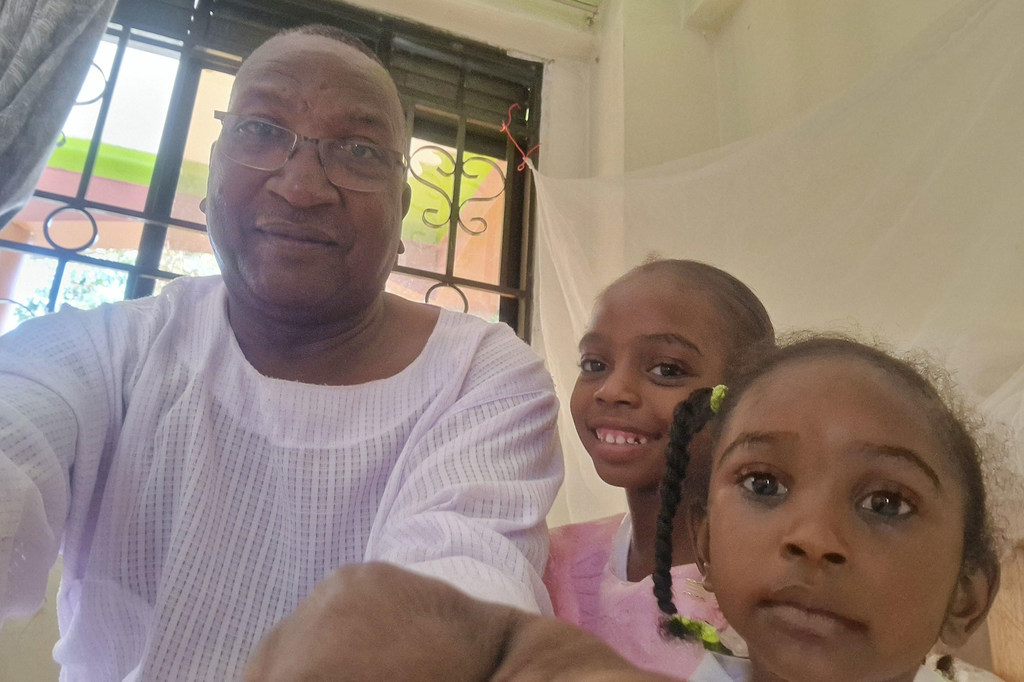Adam Ibrahim was working with the UN humanitarian agency, OCHA, in his home country, Sudan, when conflict between rival armed forces erupted in early 2023 and he became a refugee alongside thousands of others who continue to flee the ongoing violence.
Sudan is one of the world's largest and most complex humanitarian crises, with more than 30.4 million people - over half the population - urgently needing humanitarian assistance, yet the 2025 Sudan humanitarian needs and response plan is severely underfunded, with only 13.3 per cent of the required resources received so far.
Forced to flee the country with his family after the war intensified, Mr. Ibrahim returned to help people affected by the war in Darfur. Ahead of World Humanitarian Day, marked annually on 19 August, he described his journey, from aid worker to refugee and back again to Sudan.
"I was at home helping my daughter revise for her grade six exams, scheduled for the next day. Then, out of nowhere, the sound of heavy gunfire shattered the silence in my hometown, Zalingei, the capital of Central Darfur state, which remains gripped by insecurity and critical shortages of basic services.

At first, I thought the gunfire would pass quickly. I rushed to stock up on food supplies and water, enough for six days. But, the streets became battlegrounds. All I could do was try to keep my family safe.
Despite the chaos, I continued to work. Electricity and Internet access were sporadic, but I kept my phone charged to send daily updates to the OCHA Head of Office. It gave me purpose amid the uncertainty.
Eventually, it became too dangerous to stay.
The journey of displacement
On the 39th day, we fled. Our family of 10 began a harrowing journey with no clear destination, only the desperate need to escape. We left behind more than just walls and belongings; we left behind a life built with love and hope.

Our journey took us first to Nyala in South Darfur, then to Kosti in White Nile State. From there, we crossed the border into neighbouring South Sudan and eventually reached Uganda, a country I had heard offered stability and a good education system for children. The journey by car took 23 days. My children had no passports, and there were no refugee camps for Sudanese nationals at the time.
To my relief, migration authorities in both countries were kind and supportive. In Kampala, we rented a house and received asylum status within three days. The moment I held our refugee cards, I exhaled deeply and thought 'we've made it.'
I enrolled my children in school and began working online, finally finding a sense of stability.
Here I was, an aid worker now a refugee, needing the same support I once provided to others.
Returning to Zalingei
Months later, I faced a difficult decision. Do I stay with my family or return to Darfur and continue the work I had done for years? I chose to return.
Leaving my family behind was incredibly hard, but their safety was paramount.
I returned to Zalingei with a renewed sense of duty to serve those still trapped in the hardship I had endured. I was also the sole breadwinner for my family and needed to ensure they could survive in Uganda.
My hometown changed
When I arrived in Zalingei, I barely recognised it. Buildings were scarred with bullet holes.
I found another family sheltering inside our house, a doctor and his family whose own home had been destroyed. I let them stay, setting aside a small section for myself and a colleague. The house had been looted. Windows were gone and our belongings had vanished. I had hoped to find my children's school certificates, photos, any documents left behind. But, they were gone.
Everyone was armed, even children as young as 15. People were tense, traumatised and always bracing for the next wave of violence.

Machine guns and wreckage in West Darfur
I didn't stay long in Zalingei. Soon I was called to El Geneina in West Darfur, a town devastated by violence, and whose people desperately needed humanitarian support.
El Geneina's streets were strewn with the wreckage of burned-out military vehicles. Armed men patrolled in pickup trucks mounted with machine guns.
The humanitarian needs were immense. People lacked food, shelter, household essentials, healthcare, clean water and protection, but we never had enough resources for them.
Family, sacrifice and hope for Sudan
It's heartbreaking to witness the suffering caused by the recent donor funding cuts. Many organizations have been forced to scale back their operations, leaving countless people without help.
It's heartbreaking to witness the suffering caused by the recent donor funding cuts.
Still, we did all we could.
Between 2023 and 2025, we reached more than 800,000 displaced people with critical assistance, in West and Central Darfur.
I also went on to work with OCHA colleagues in Chad to coordinate cross-border humanitarian convoys into Darfur.
These convoys were lifelines, delivering food, medicine and supplies to communities cut off by conflict.
Today, I remain in Sudan.
My family is still in Uganda. I visit them once a year, but the separation is painful."






